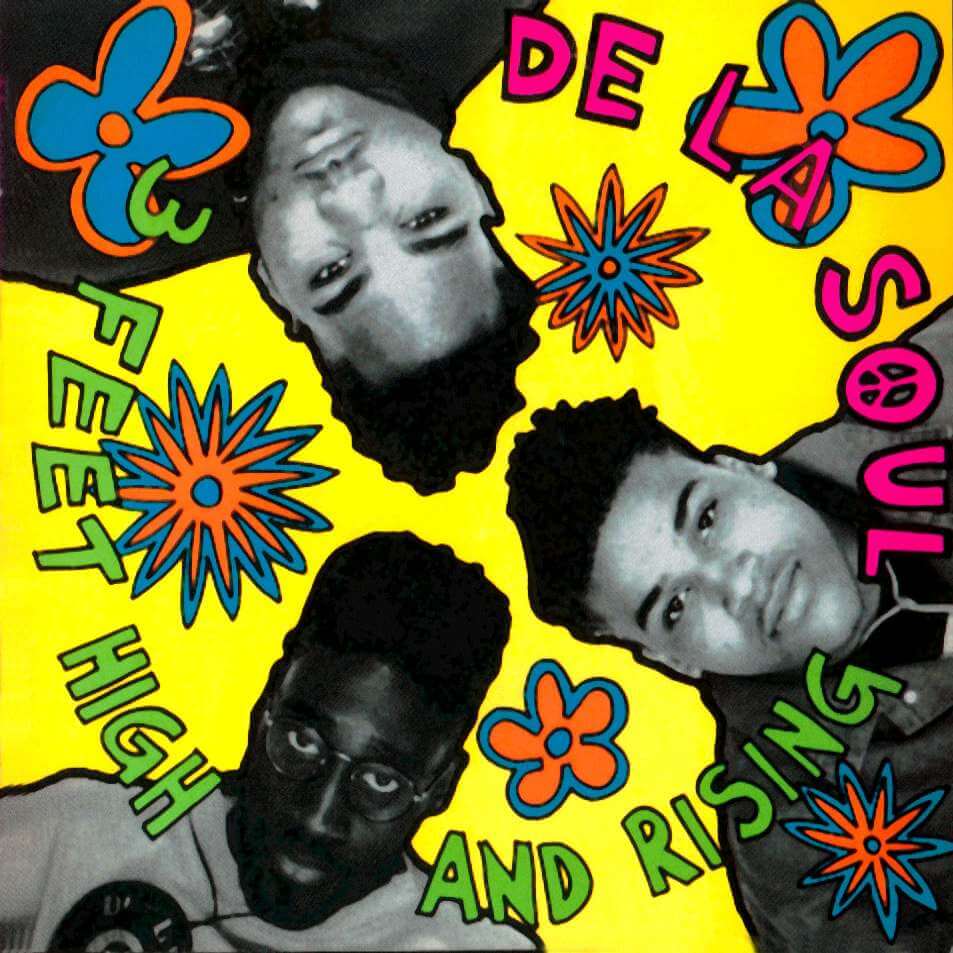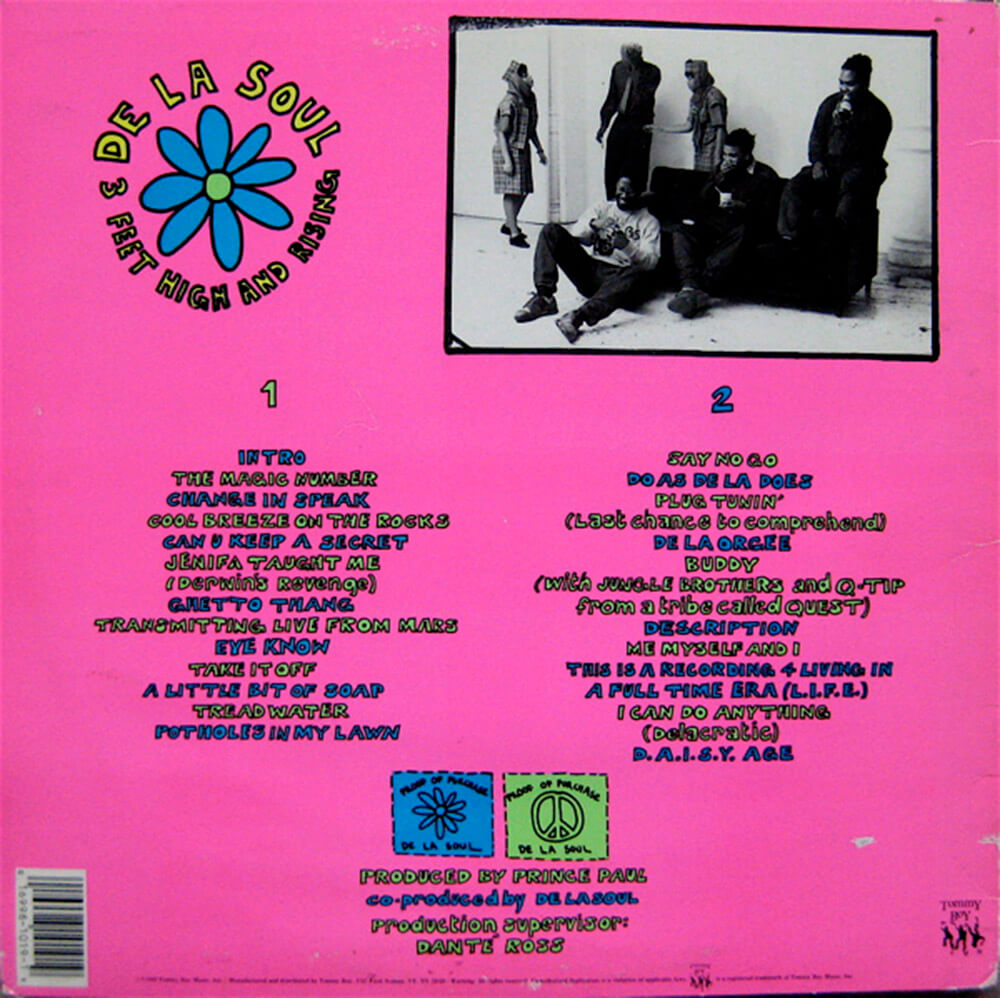Framed like a novel and as madcap as the best sketch comedy, 3 Feet High and Rising churns through samples, social issues and stereotypes with a levity unbeknownst to the late 80’s Hip Hop landscape; a scene that had split its focus between radical politics and street-wise chicanery. Where the era’s torchbearers spoke with a certain severity, rarely taking a breath or cracking a smile, Long Island’s De La Soul emanated an almost rigid positivity, creating a frenetic and buoyant puree of AM radio pop and cartoonish flotsam that was equal parts heart and innovation. This contrast in values and outsider attitude not only provided the genre with an alternate viewpoint, it forced the form to broaden its horizons, championing detail and individuality and refusing to paint in broad strokes.
Capable of a complex and knotty verbal discourse, Posdnuos and Trugoy (Plugs 1 and 2, respectively) are far less concerned with rhyme and reason than most of their peers, instead dabbling in vivid imagery and subtle word games that rarely reveal themselves on the first listen. “Eye Know” focuses on lovemaking and the female of the species, abandoning commonplace sex metaphors, instead eloquently comparing the emotional impact of a kiss to being “filled with the pleasure principle in circumference to my voice.”
Accompanying the rapturous poetics is a penchant for cheeky in-joking, which rears its head in every phallic nickname and plea for good hygiene, reaching its summit in the hilariously candid “A Little Bit of Soap.” They’re even willing to buck songwriting convention, taking a break midway through a compelling tale of promiscuity to give a sexual competitor the chance to pound out “Chopsticks” on the piano, cheering him on as his fingers nervously fumble over the keys.
The overall lyrical impression is diverting and sunny, which may have inspired detractors to label them as hippies, but don’t let whimsy overshadow intention. The prime directive is to further the medium by standing in contrast to it and no other moment does that better than “Ghetto Thang,” which recognizes the endless cycle of violence and parental neglect and fingers rap’s fascination with gun play as a corrupting element.
Keeping with the theme of disparity, Prince Paul recycled old elements to fabricate a new style, favoring thrift-store eclecticism over studio sheen. The product of this strident anti-conformity was more puzzle than composition, marrying breezy guitar, infectious bass lines and the fuzziest and most esoteric of vocal loops, often culled from instructional records or dated curios. Though random upon on first glance, Paul’s brilliant melding of flavors provided context to the songs they accompany, particularly effective when stealing Daryl Hall’s vocals from “I Can’t Go for That (No Can Do)” and re-purposing them as an anti-drug screed. He further rebels against structure and copyright law on “Cool Breeze on the Rocks,” scotch-taping a variety of songs prominently featuring the word “rock” into an ungainly sonic prank, aligning himself more with Dadaism and tape-loop experimentation than his soul and funk-obsessed contemporaries.
Yet, his most passionate endeavor is merging these so-called “serious” artistic conceits with whimsy and guile. His finest union is “The Magic Number,” which bursts with more color than a box of crayons, brims with zeal and floats on a wave of xylophone, cymbal clash and deep groove. This one is more dance than discourse, kept afloat by Paul’s need to cram every moment with a unique noise or peculiar discovery. Case in point, the track’s denouement is jammed with bursts of James Brown and Johnny Cash, reckless scratching, snippets of Mayor La Guardia reading comic books, multiplication lessons from Schoolhouse Rock!, Eddie Murphy asking his audience if they’ve ever been hit by a car…
It’s a disorienting and exhausting clash of differing elements, as if three TVs playing different commercials at full blast were all vying for your attention. The passage of time hasn’t minimized this maddening euphoria, nor has it provided an act capable of reproducing it. Though the cut-and-paste technique has been carbon copied and the attitude has been adopted, none are as recklessly creative, wistful or seamlessly synergistic.
De La Soul – 3 Feet High And Rising was ranked #22 on Matt Deapo‘s Hip Hop Top 50, a ranking of 50 of the best Hip Hop albums recorded between 1978 and 2006, based on this consideration and these rules.

